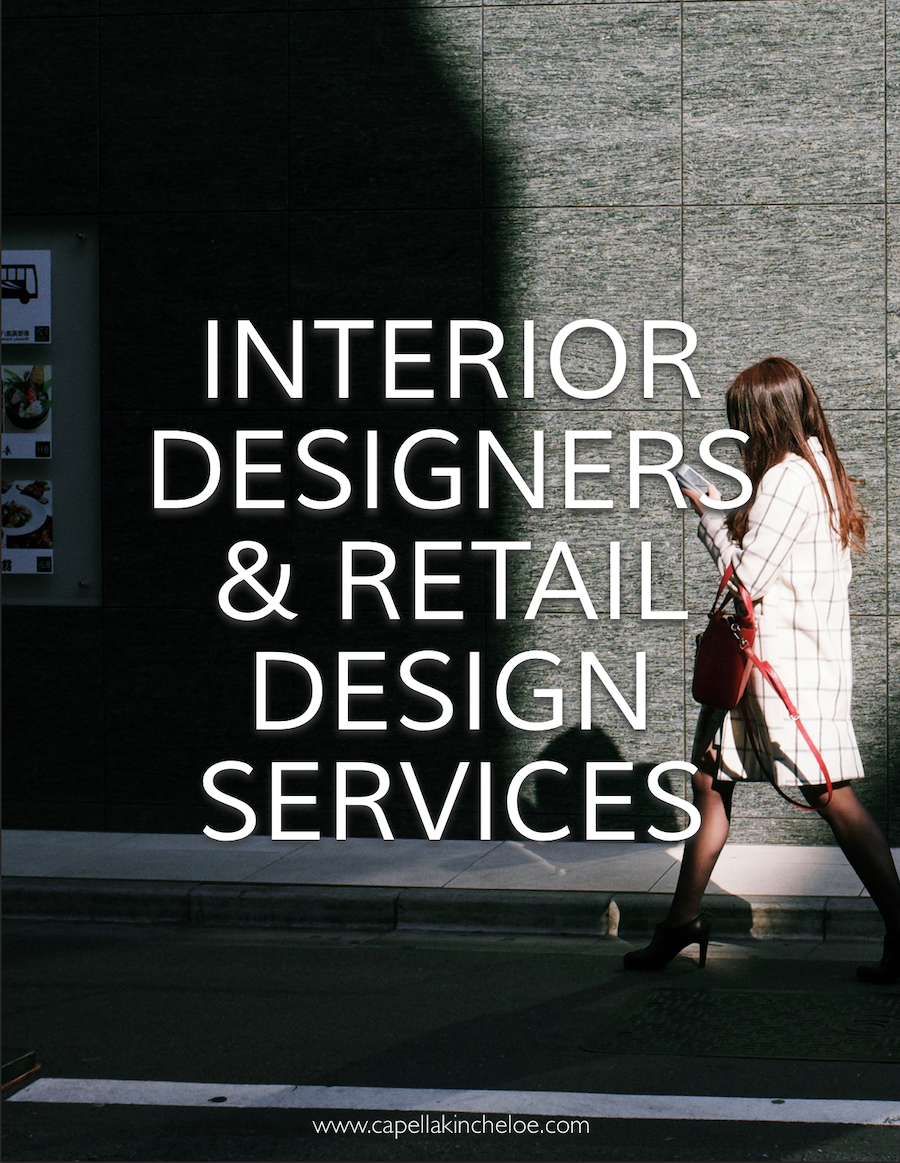Interior Designers & Retail Design Services
I was asked recently, that as more retailers start introducing design services into their furniture offerings how can we as designers, start setting ourselves apart as well as stay relevant.
This question caused an internal scream of the soul.
If designers don’t know the value that they bring, don’t know how the services that we offer benefit clients, and are confused about it - how can we expect clients who aren’t part of our industry to understand?
Before you read on, if this is you - you are the designer who can’t explain the difference between a client walking into a retailer and taking advantage of their free design services and full service interior design - please take 30 minutes and think about this. This article is a start: Is Interior Design turning into a Commodity?
Giving free or low-cost design services aren’t sustainable for the interior designer. We can’t pay our bills this way. The only way this works is if there is a huge volume (as in e-design companies) or if they make money another way (like retail furniture sales).
Ultimate Motivation
One of the main differences in clients working with a designer in a retail store and an independent designer is the designer’s ultimate motivation. Retailers employ designers to help sell their furniture. Selling furniture is how they make money. They want clients to buy as much of their furniture as possible - if they can employ a designer to show the client what pieces and where -they sell more furniture. More furniture = more profits. They do not want those clients to leave the store or see anything other than their brand of furniture. The retail designer will make it as easy as possible for the clients to fully furnish their homes.
Independent interior designers motivation should be to create the best possible outcome for the clients based on their budget, home, lifestyle, family, and aesthetic. They work for the client - not for the retail store.
Full View or Partial View
Retail design services are usually fairly minimal compared to full service because they want to fit as much of their furniture into the client’s space rather than taking all the components - budget, home, lifestyle, family, aesthetic - into consideration. The difference between full service interior design and retail design services is that when going retail, there is only a small partial view of what is possible. Retail design services aren’t going to be making suggestions to open a wall for better flow. They won’t let you know that you can get better quality products somewhere else. They can’t assist you with products their company doesn’t sell. They aren’t sourcing bespoke or antiques. They aren’t overseeing the entire design plan and execution.
Purchasing Power
Independent interior designers are not limited by the products that the retailer sells. They have unlimited (almost too many!) options of manufacturers, vendors, and resources to make a home completely unique and personalized. If you get a client that wants to purchase all retail, explain the benefits of to-the-trade and if they’re still not swayed they probably aren’t the right client for you. I believe that one of the superpowers of interior designers should be crafting a home that is unique to the client - when all homes look like a page out of a catalog, we lose our superpower. This should not be a service independent interior designers offer.
Not Your Clients
Clients often don’t know what is possible, what options are out there, and the difference in services. It’s up to the designers to make that clear. It is the designer’s job to let clients know the services they provide and the value they bring to a project, but it is not the designer’s job to work with clients who don’t have the budget for full service design - they can go get retail design services or work with e-design. Not everyone is your client and not everyone can afford an interior designer. (Because most of the time the interior designer can’t afford to have that type of client.)




